Discover how UX design revolutionizes healthcare by improving patient experience, interactions and enhancing usability. By focusing on patient needs, UX creates intuitive solutions that foster better communication and lead to improved health outcomes.
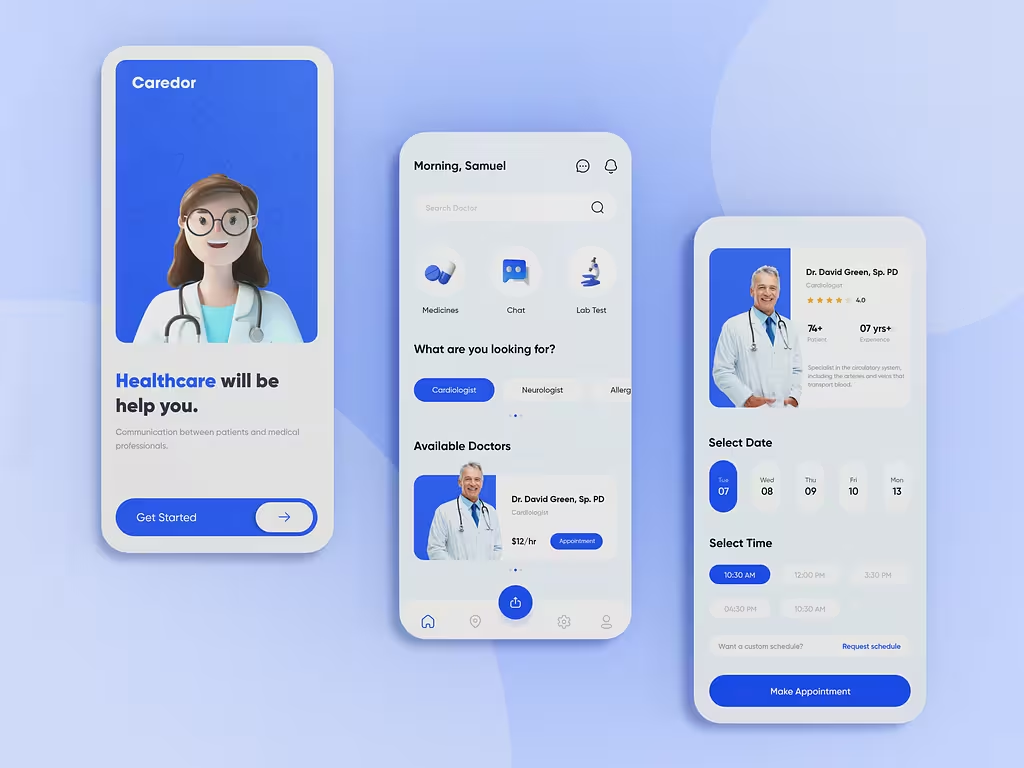
Summary
The future of healthcare relies heavily on effective UX design, which enhances patient satisfaction, boosts productivity, and can save lives. UX designers must work closely with healthcare professionals, patients, and caregivers to understand their needs and create tailored solutions.
To improve patient care and experience, tools like EHRs, digital healthcare products, accessibility features, virtual reality, and telehealth require strong UX design.
By prioritizing user experience and staying updated on industry trends and technologies, UX designers can significantly enhance patient care, efficiency, and ultimately lead to lifesaving outcomes.
Introduction: The Value of User Experience in Healthcare
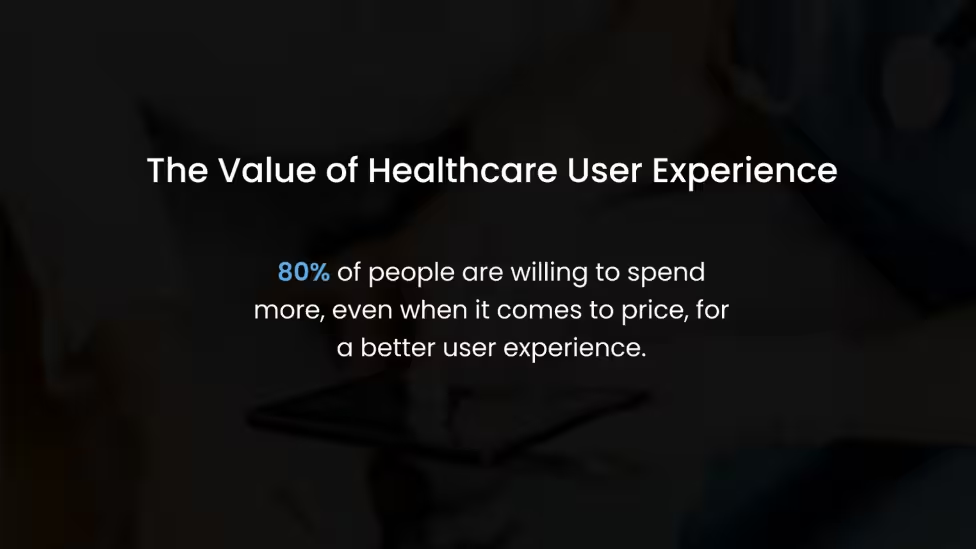
Over the years, the healthcare sector has continually evolved due to technological advancements that have transformed service delivery.
According to User Guiding, alongside price and security, a superior user experience is a key factor influencing consumer choice. In fact, 80% of individuals are willing to pay more for a better experience. This has led 70% of corporate leaders to view UX and customer experience (CX) as competitive differentiators.
One significant development is the rising importance of user experience (UX) design in healthcare. By focusing on creating user-friendly products and services, UX design has become essential for improving patient outcomes and experiences.
In this article, we will explore the impact of UX design on healthcare, highlighting how this approach is reshaping the industry. We’ll discuss its application in enhancing patient experiences and outcomes, as well as the challenges that need to be addressed for broader adoption.
The Importance of UX Design in Healthcare
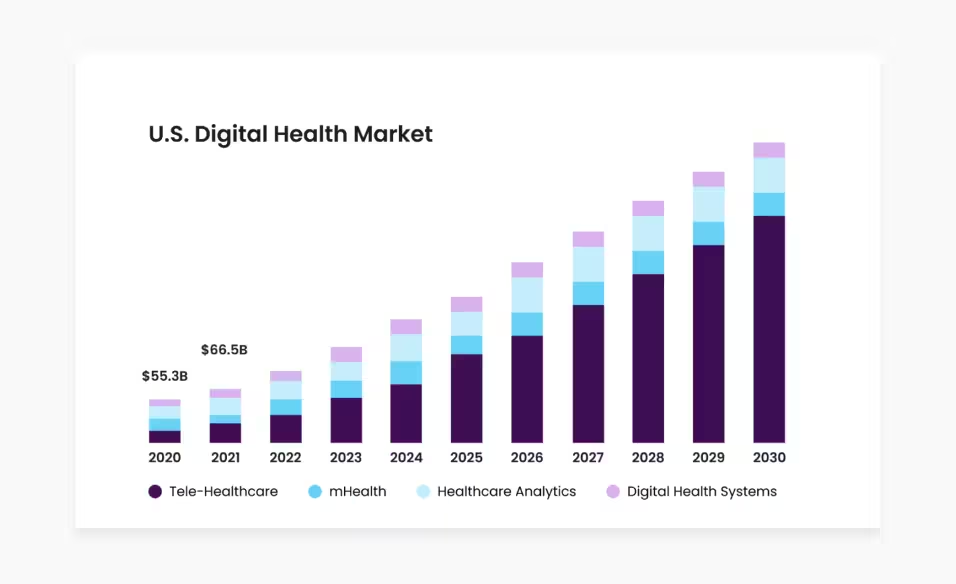
The health-tech industry is rapidly growing, with global revenue expected to reach USD 1,305.1 billion by 2030, according to Grand View Research. The primary goal of UX design is to create products and services that are intuitive, easy to use, and user-friendly. This is especially crucial in healthcare, where patients must navigate complex systems and processes. As digital technologies become more prevalent, the importance of effective UX design has only increased.
A strong user experience can significantly influence patient outcomes and convenience. For example, a well-designed patient portal can encourage patients to engage more actively in their health, leading to better outcomes. Similarly, a thoughtfully designed medical device can streamline procedures for healthcare professionals, reducing the likelihood of errors and enhancing patient safety.
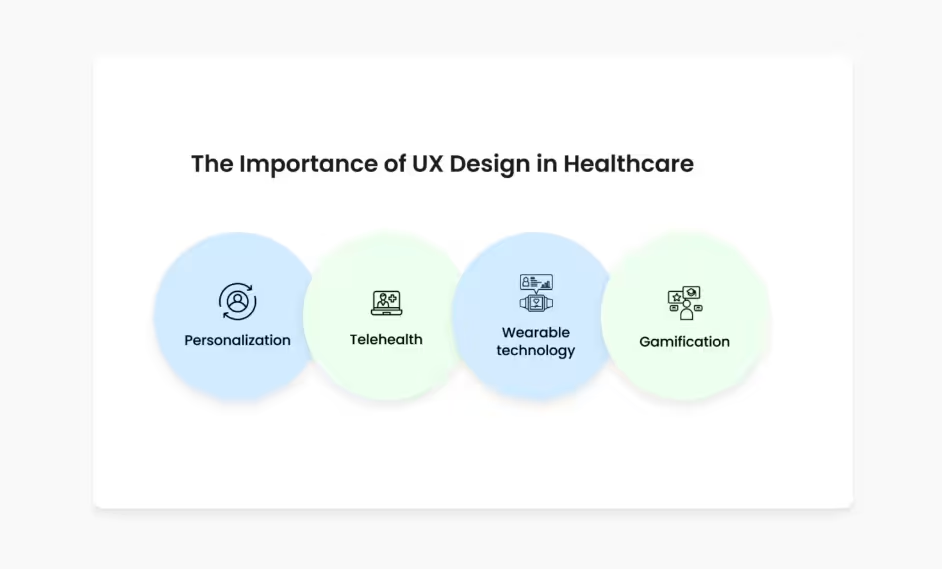
1. Personalization
Patients are increasingly seeking medical supplies and services tailored to their individual needs. This trend has led to the development of personalized healthcare apps and tools that leverage data analytics and artificial intelligence to provide customized recommendations and treatment plans.
2. Telehealth
The COVID-19 pandemic has accelerated the adoption of telehealth technologies, allowing patients to receive care from the comfort of their homes. Effective user experience design is crucial for making telehealth services accessible and user-friendly, particularly for those who may not be tech-savvy.
3. Wearable Technology
Wearable devices like smartwatches and fitness trackers are gaining popularity for health monitoring and real-time feedback. To be effective, these technologies must feature a user-friendly design that prioritizes comfort, simplicity, and accuracy.
4. Gamification
Healthcare providers are increasingly using gamification strategies to engage patients in their health. By incorporating game-like elements such as points, badges, and leaderboards, healthcare apps encourage users to exercise more, adhere to medication schedules, and adopt healthier lifestyles.
By incorporating these trends into their UX design strategy, healthcare providers can create more engaging, effective, and user-friendly products and services, ultimately enhancing patient health outcomes.
Good UX Design in Healthcare Products
There are numerous examples of healthcare products that embody sound UX design principles. Healthcare apps, for instance, have gained popularity as tools providing virtual access to medical services. Effective UX design is essential for ensuring these apps are user-friendly, intuitive, and accessible to all patients, regardless of their tech skills.
Another area benefiting from smart UX design is electronic health records (EHRs). While EHRs are crucial for storing and retrieving patient data, their complexity can be a barrier for healthcare workers. UX designers have streamlined EHR interfaces, making it easier for medical practitioners to access information and make informed care decisions.
Medical devices also reflect the importance of good UX design. Products like insulin pumps and glucose monitors are vital for managing chronic conditions, and they must be intuitive and accessible for patients of all ages.
Virtual reality (VR) is another field where UX design is making a significant impact. VR is increasingly used to help patients manage pain and anxiety during medical procedures. Effective UX design ensures these experiences are user-friendly and positively contribute to patient comfort.
Artificial intelligence (AI) is also transforming healthcare, and UX designers play a key role in creating intuitive AI interfaces for both patients and providers. They prioritize patient privacy and safety in these designs, ensuring a secure and user-friendly experience.
Incorporating these UX design principles across various healthcare products ultimately enhances patient care and improves overall experiences.
How Good UX Design Enhances Patient Care in Healthcare Systems
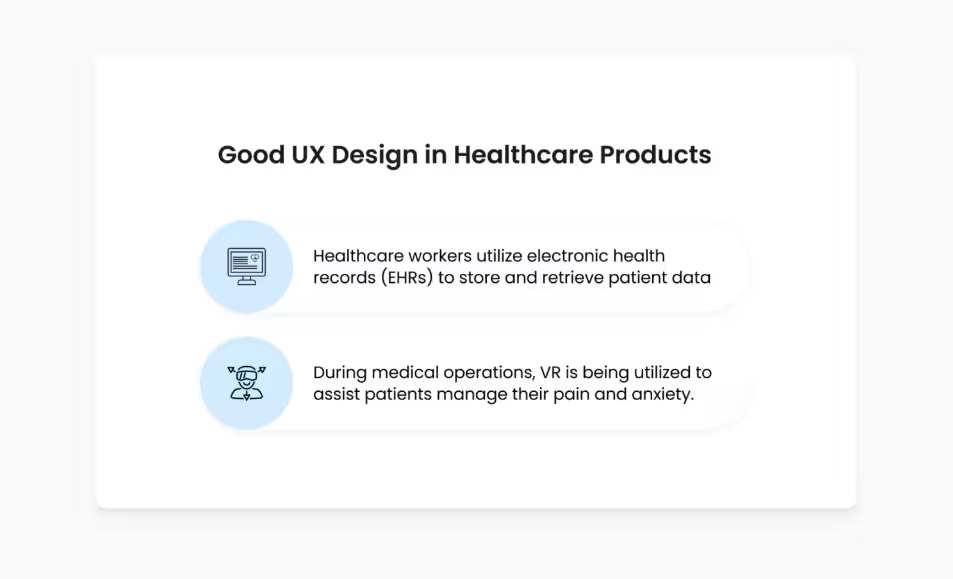
UX designers are not only focused on creating individual products; they are also dedicated to improving the overall healthcare system. Their efforts center around developing user-friendly interfaces that help healthcare professionals navigate complex medical information, facilitating better decision-making.
Effective UX design can enhance patient care by increasing productivity, reducing errors, and ensuring that healthcare personnel have the necessary information to make informed choices. This streamlined approach ultimately leads to better patient outcomes.
Accessibility is another critical aspect of healthcare UX design. It is essential that all patients, regardless of their abilities, can access healthcare systems and services. UX designers work to create interfaces that are intuitive and easy to use for individuals of all ages and abilities, including those with disabilities.
Telehealth is an area where effective UX design is especially important. With the rise of virtual medical visits and remote patient monitoring, creating user-friendly telehealth interfaces is crucial. Good UX design ensures that patients can easily manage their healthcare needs, enhancing their overall experience and engagement.
Challenges in Adopting UX Design in Healthcare
One significant challenge in adopting UX design in healthcare is ensuring accessibility for all patients. For example, individuals with visual impairments may struggle to use poorly designed glucose meters effectively. Making accessibility a top priority, UX designers must ensure that their products and services are usable by patients with varying disabilities.
Despite these challenges, the rise of advanced technologies and patient-centered approaches presents new opportunities for UX design in healthcare. Designers can facilitate remote patient interactions, gather feedback, and make informed design choices to enhance healthcare services and products.
While the use of UX design in healthcare is expected to grow by 2026, this shift will require healthcare professionals to embrace change and adopt new perspectives.
Conclusion
UX design is revolutionizing healthcare by significantly enhancing patient experiences and outcomes. By creating user-friendly and intuitive products and services, healthcare providers can boost engagement, reduce costs, and improve patient satisfaction.
However, several challenges must be addressed to ensure the widespread adoption of UX design in healthcare. One major hurdle is the complexity of existing healthcare systems and procedures. To overcome these obstacles, healthcare professionals must be open to embracing new technologies and methodologies, prioritizing user-centered design in their offerings.
Collaboration among healthcare providers is essential to create a more streamlined and efficient healthcare system that focuses on user needs.
In summary, while challenges exist, the potential of UX design to transform healthcare is immense. With the right approach, healthcare providers can build a more patient-centered and effective system that benefits everyone involved.




